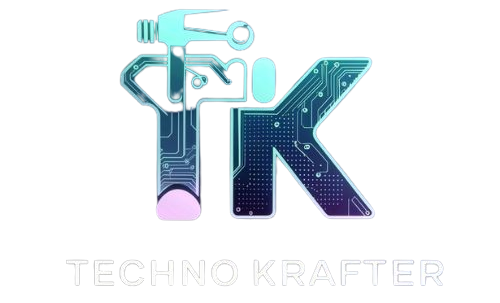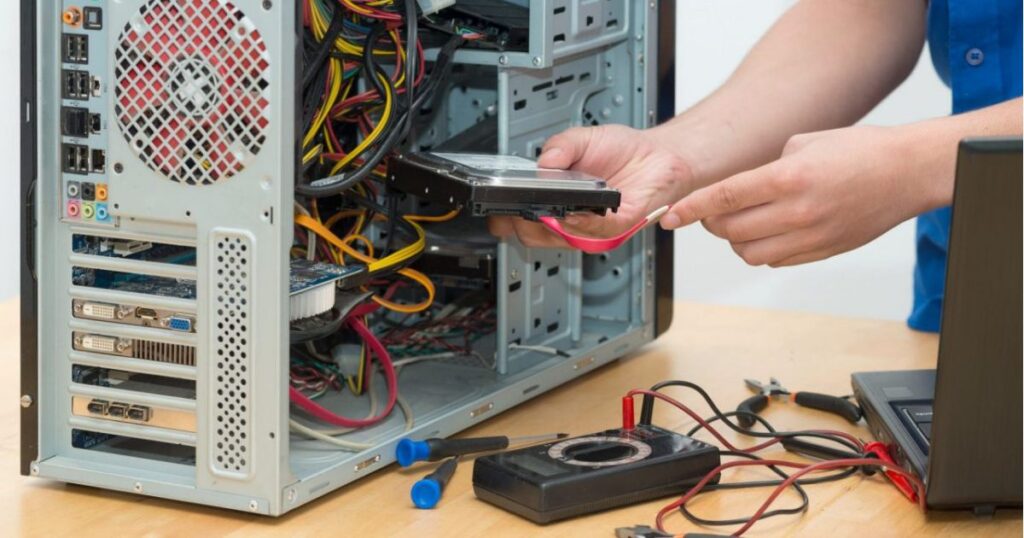Are you ready to level up your gaming experience? How To Build A Gaming PC can be an exciting and rewarding journey. Not only do you get to customize every aspect of your rig, but you also gain a deeper understanding of how your machine works.
Whether you’re a seasoned gamer or a newbie looking to dive into the world of PC gaming, this comprehensive guide will walk you through the process of building your very own gaming powerhouse.
Step 1: Build A Gaming PC Planning
Planning your Build A Gaming PC is the crucial first step that sets the foundation for the entire process. It involves careful consideration of your budget, gaming requirements, and the compatibility of hardware components to ensure a smooth and successful build.
Define Your Budget
Before delving into the world of PC components, it’s essential to establish a realistic budget for your Build A Gaming PC. Your budget will dictate the quality and performance of the components you can afford, so it’s crucial to strike a balance between affordability and performance.
Consider how much you’re willing to invest in your gaming rig, keeping in mind that prices can vary widely depending on the specifications and brands of the components you choose.
Determine Your Gaming Needs
Next, assess your gaming requirements to determine the level of performance you need from your gaming PC. Consider factors such as the types of games you play, their system requirements, and your desired gaming experience.
Are you a casual gamer who enjoys indie titles, or do you aspire to play the latest AAA games at maximum settings? Understanding your gaming needs will help you prioritize components and allocate your budget effectively.
Research Hardware Components
With your budget and gaming needs in mind, research the latest hardware components to identify the best options for your Build A Gaming PC. This includes components such as the CPU, GPU, motherboard, RAM, storage drives, power supply unit (PSU), and case.
Pay attention to factors like performance benchmarks, compatibility with other components, and value for money. Websites, forums, and tech review channels are valuable resources for gathering information and insights from experienced builders and gamers.
Consider Future Upgradability
When selecting components for your Build A Gaming PC, it’s essential to consider future upgradability to ensure that your rig remains relevant and capable of handling new games and technologies down the line. Choose a motherboard with ample expansion slots and compatibility with future CPU and GPU generations.
Opt for a modular PSU that allows for easy upgrades without replacing the entire unit. Additionally, leave room for additional RAM and storage expansion to accommodate future needs.
Compatibility Check
Before finalizing your component selections, perform a compatibility check to ensure that all the hardware components are compatible with each other and with your chosen operating system.
Pay close attention to factors such as socket compatibility between the CPU and motherboard, RAM speed and capacity, GPU clearance in the case, and power requirements of the components. Online compatibility checkers and forums can help you verify compatibility and identify any potential issues before making your purchase.
Create a Parts List
Once you’ve researched and selected all the necessary hardware components for your Build A Gaming PC, create a comprehensive parts list detailing each component, its specifications, and its price.
This list will serve as a roadmap during the purchasing process, helping you stay organized and ensuring that you don’t overlook any essential components. Be sure to double-check prices and availability from multiple retailers to secure the best deals and discounts.
By carefully planning your Build A Gaming PC, you can ensure that your final build meets your gaming needs, fits within your budget, and delivers the performance and experience you desire. Taking the time to plan and research upfront will pay off in the long run, resulting in a successful and satisfying Build A Gaming PC.
Read Also More: trendzguruji.me: your ultimate destination for computer
Step 2: Choosing the Right Components
The heart of any gaming PC is its components. Here’s a breakdown of the key parts you’ll need:
- Processor (CPU): Considered the brain of your system, the CPU handles all calculations and tasks. Opt for a high-performance processor from brands like Intel or AMD for smooth gaming performance.
- Graphics Card (GPU): The GPU is responsible for rendering graphics in games. Choose a powerful graphics card to ensure smooth gameplay and crisp visuals.
- Motherboard: The motherboard serves as the foundation for your PC, connecting all the components together. Make sure to select a motherboard that supports your chosen CPU and GPU, and offers room for future upgrades.
- Memory (RAM): RAM plays a crucial role in gaming performance by providing fast access to data. Aim for at least 8GB of RAM, with 16GB or more recommended for optimal gaming performance.
- Storage: Opt for a combination of SSD (Solid State Drive) and HDD (Hard Disk Drive) storage for fast boot times and ample storage space for your game library.
- Power Supply Unit (PSU): Choose a reliable PSU with enough wattage to support your components, with additional headroom for future upgrades.
- Case: Select a case that accommodates your chosen components and offers sufficient airflow for cooling.
Step 3: Assembling Your PC
Assembling your gaming PC is where the magic truly happens. It’s the stage where individual components come together to form a powerful machine ready to bring your gaming fantasies to life. This step-by-step process requires attention to detail and patience, but the end result is well worth the effort.
- Install the CPU: The central processing unit (CPU) is the heart of your gaming PC, responsible for executing instructions and performing calculations. To install the CPU, first locate the CPU socket on the motherboard. Lift the socket lever, align the CPU with the socket, ensuring that the alignment markers match, and gently lower the CPU into place.
Once seated, close the socket lever to secure the CPU in place. Apply thermal paste if necessary, then attach the CPU cooler according to the manufacturer’s instructions. - Install the RAM: Random access memory (RAM) provides temporary storage for data that the CPU needs to access quickly. To install the RAM, locate the RAM slots on the motherboard.
Press down on the retention clips at the ends of the slots to open them, then align the notches on the RAM module with the keys in the slot. Firmly press down on the module until the retention clips snap into place, securing the RAM. - Mount the Motherboard: The motherboard serves as the foundation of your PC, providing connectivity between all components. To mount the motherboard, first place it in the case, ensuring that the I/O shield lines up with the rear ports.
Align the mounting holes on the motherboard with the standoffs in the case, then secure the motherboard to the case using screws. Be careful not to overtighten the screws, as this could damage the motherboard. - Install the Graphics Card: The graphics processing unit (GPU) is responsible for rendering graphics in games, making it a crucial component for gaming performance. To install the GPU, locate the PCIe slot on the motherboard.
Remove the corresponding expansion slot covers from the case, then carefully insert the GPU into the PCIe slot. Secure the GPU to the case using screws or retention clips, ensuring that it is firmly seated. - Connect Storage Drives and PSU: Connect your storage drives, such as SSDs and HDDs, to the appropriate SATA ports on the motherboard. Use SATA data cables to connect the drives to the motherboard and SATA power cables from the power supply unit (PSU) to provide power.
Connect the PSU to the motherboard using the main 24-pin ATX power connector and the CPU power connector. Ensure that all power cables are routed neatly and securely plugged in.
- Connect Peripherals: Connect any additional peripherals, such as case fans, RGB lighting, and front panel connectors, to the appropriate headers on the motherboard. Refer to the motherboard manual for the location of these headers and the correct orientation for connecting cables. Take your time to route cables neatly and avoid blocking airflow or obstructing components.
- Cable Management: Proper cable management is essential for airflow and aesthetics. Route cables behind the motherboard tray or through designated cable routing holes in the case to keep them out of sight and prevent them from obstructing airflow. Use cable ties or Velcro straps to secure cables in place and keep them organized.
- Power On and Install OS: Once all components are installed and cables are connected, power on your PC to ensure that everything is functioning correctly. If the system powers on and displays the BIOS screen, you’re off to a good start. Proceed to install the operating system (OS) and necessary drivers from a USB drive or optical disc, following the prompts and instructions provided.
Assembling your gaming PC may seem daunting at first, but with careful planning and attention to detail, it’s a rewarding process that allows you to create a custom-built machine tailored to your gaming needs. Take your time, follow the steps outlined above, and soon you’ll be ready to immerse yourself in the world of PC gaming like never before.
Step 4: Testing and Optimization
Once your PC is assembled, it’s time to test for stability and performance. Run stress tests and benchmarking software to ensure everything is functioning correctly. You can also overclock your components for additional performance, but be sure to do so responsibly to avoid damaging your hardware.
Step 5: Enjoy Your Gaming Rig
With your gaming PC up and running, it’s time to sit back, relax, and enjoy your favorite games in all their glory. Whether you’re immersing yourself in the latest AAA titles or exploring indie gems, your custom-built gaming rig will deliver an unparalleled gaming experience tailored to your preferences.
Conclusion
Build a gaming PC is a rewarding endeavor that allows you to create a personalized gaming experience tailored to your needs and preferences. By following this step-by-step guide, you’ll be well on your way to constructing the ultimate gaming powerhouse that will provide hours of entertainment for years to come.
So roll up your sleeves, gather your components, and embark on the journey to building your dream gaming PC today!







